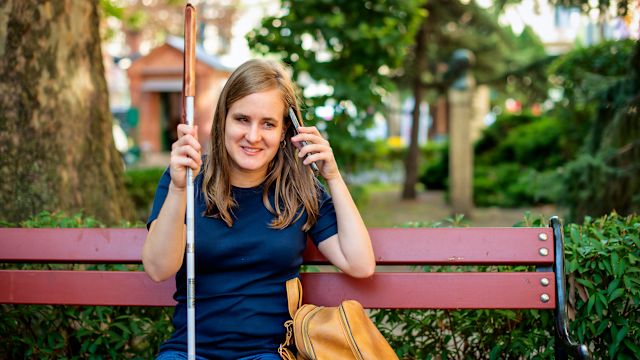Updated on December 14, 2023
Diabetic macular edema (DME) is one of several eye problems that can occur as a result of having diabetes.
DME begins with another diabetes complication, called diabetic retinopathy. Diabetic retinopathy is damage to the blood vessels that supply the layer of light sensitive cells in the back of the eye (the retina). This causes blood vessels to leak.
DME occurs when blood vessels leak into the macula, the dense cluster of light-sensitive cells at the center of the retina, causing the macula to fill with fluid and swell. This impairs central vision—a person’s ability to see details, read words, recognize faces, safely operate a vehicle, and perform many other everyday tasks. Symptoms of DME can include blurry or wavy vision, double vision, dulled colors, and an increase in floaters.
DME can occur at any stage of diabetic retinopathy, but it is more likely to occur at the advanced stages.
Treatment for DME
Anti-VEGF therapy is the most commonly used treatment approach for DME. It involves injections of medications that block a protein called vascular endothelial growth factor, which helps slow and stop leakage from blood vessels.
Treatment can help improve vision in many cases, but people with DME may experience some degree of vision loss. Vision loss is a change in vision that cannot be fully corrected.
If a person has experienced vision loss as a result of DME, learning new ways to utilize remaining vision can be an important strategy in treatment.
Vision rehabilitation
Also known as vision rehabilitation therapy and low vision rehabilitation, vision rehabilitation teaches skills for living with low vision. Vision rehabilitation will vary from one person to the next, depending on what has become difficult or challenging as a result of vision loss.
Reading and writing, household chores, food preparation, navigating spaces safely, maintaining independence, and feeling better—physically, mentally, emotionally—can all be goals of vision rehabilitation.
The skills, strategies, and tools a person may learn to use in vision rehabilitation can include the use of low vision aids and assistive technologies, adaptations to the home and workplace, and support to help with the emotional and practical challenges of living with low vision.
Again, DME affects different people in different ways, and vision rehabilitation will be a bit different for every person. The healthcare providers that are a part of a vision rehabilitation team may also vary from person to person.
Your low vision rehabilitation team
Low vision rehabilitation is typically overseen by an optometrist or ophthalmologist that specializes in treating low vision. This healthcare provider will assess vision, build a vision rehabilitation program, and also coordinate care among the other members of a vision rehabilitation team, which may include:
- A certified low vision specialist, who can train a person in the use of low vision aids and equipment.
- An occupational therapist, who can guide a person through adaptations around the home to improve function and safety, such as better lighting or using high-contrast color schemes.
- An orientation and mobility (O&M) specialist, who can help a person adapt to movement and navigation with low vision.
- A vocational rehabilitation counselor, who can work with a person to find employment or continue employment with low vision.
- A social worker, who can provide counseling, help a person access resources in the community, and help navigate the healthcare system.
If you have questions about vision rehabilitation—including how to get started—talk to your healthcare provider.






